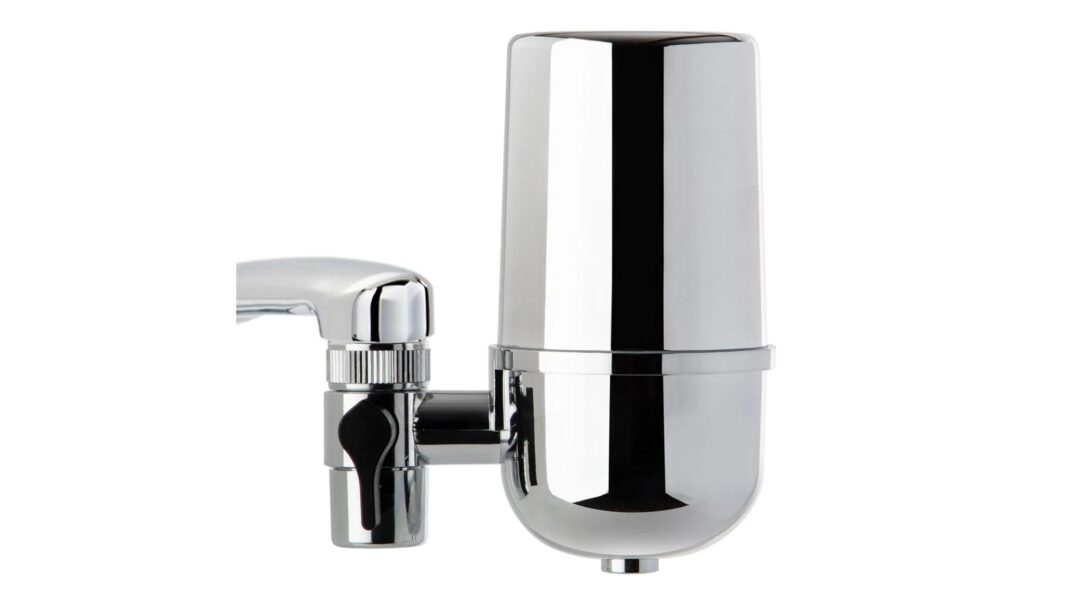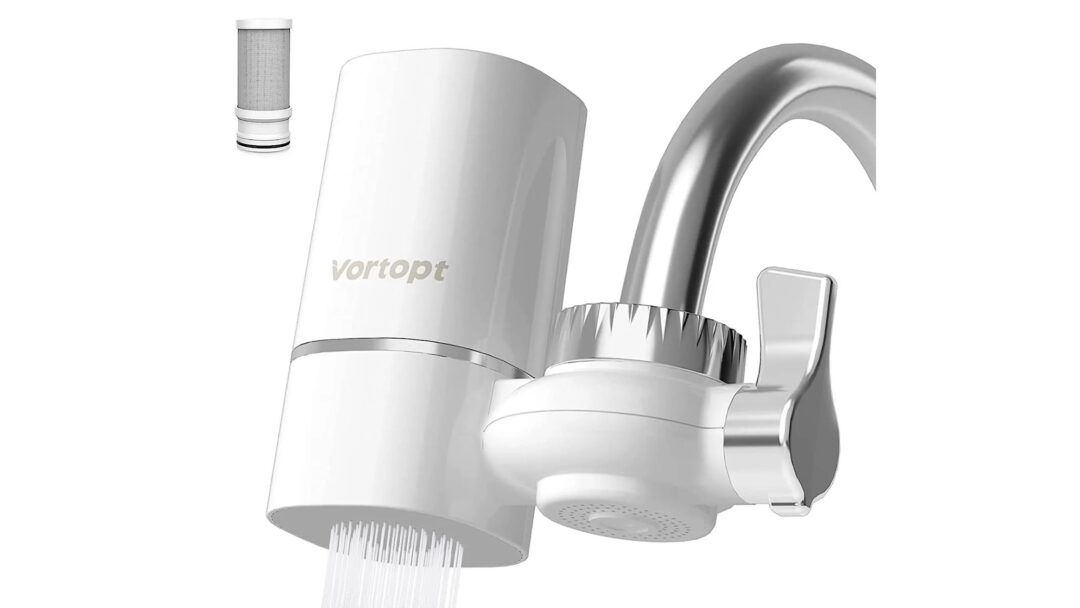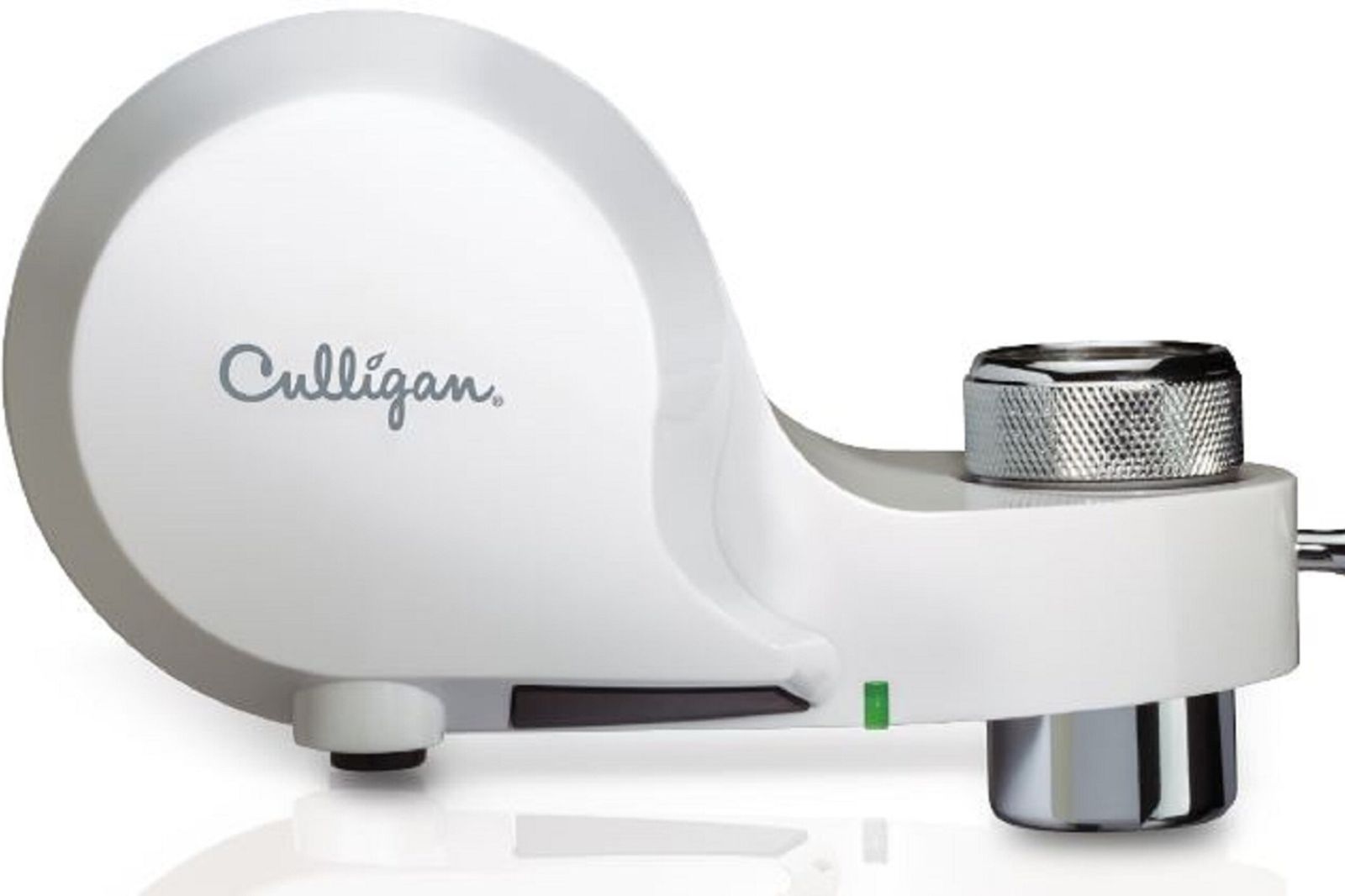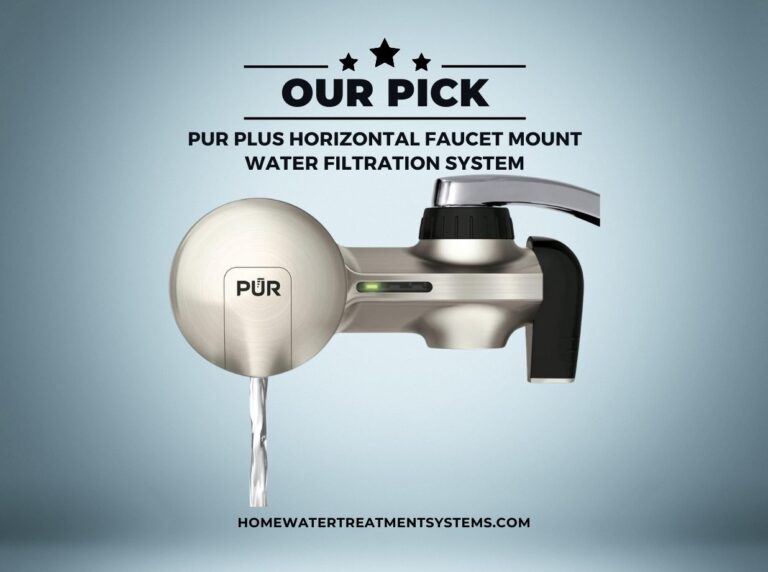What is a Faucet Mounted Filter?
Are you tired of dealing with the taste and odor of unfiltered tap water? A simple solution is to install a device that can transform your tap water into clean drinking water right at your sink.
Faucet mounted filters offer an easy way to get clean, filtered water. They attach directly to your faucet, providing a convenient and efficient way to improve water quality.

By using a faucet mounted water filter, you can enjoy better-tasting water without the need for a separate filtration system. This makes it an ideal solution for many households.
Key Takeaways
- Easy installation directly onto your faucet
- Provides clean and filtered drinking water
- Improves the taste and odor of tap water
- No need for a separate filtration system
- Convenient and efficient water filtration
What is a Faucet Mounted Filter?
A faucet mounted filter is a simple yet powerful tool designed to purify water as it flows from your faucet. It’s an effective and convenient solution for households looking to improve their drinking water quality without the need for complex installations or plumbing alterations.
Definition and Basic Components
A faucet mounted filter system is typically composed of a filtration unit that attaches directly to the faucet, a diverter that redirects water flow through the filter, and sometimes an additional unfiltered water outlet. The Pur Advanced Faucet Filtration System, for instance, is ANSI/NSF certified to reduce 71 contaminants below EPA limits, showcasing the efficacy of these systems.
The basic components work together to ensure that water flowing through the faucet is filtered, removing various contaminants and improving taste and odor. The filtration technology used in these systems can vary, with some employing activated carbon, while others may use a combination of technologies.
How They Attach to Your Sink
Faucet mounted filters are designed to be easily installed on most standard faucets. They typically attach via a clamp or adapter that fits around the faucet aerator or directly onto the faucet spout. The installation process is relatively straightforward, requiring minimal tools and no plumbing expertise.
The compatibility of faucet mounted filters with various sink configurations is a significant advantage. However, it’s essential to check the specifications of the filter system to ensure it fits your faucet type. Some faucet mounted filters are designed to be adjustable, accommodating different faucet sizes and styles.
| Faucet Type | Compatibility | Installation Ease |
|---|---|---|
| Standard Faucet | High | Easy |
| Pull-Out Faucet | Moderate | Moderate |
| Non-Standard Faucet | Low | Challenging |
How Do Faucet Mounted Filters Work?
At the heart of faucet mounted filters is a sophisticated system that purifies water. These filters are designed to be compact, typically measuring only 3-4 inches in length, and they treat water at a rate of 0.68 gallons per minute (gpm).
Filtration Technology Explained
Faucet mounted filters utilize advanced filtration technology to remove a wide range of contaminants from water. The technology involves multiple stages of filtration, including:
- Activated carbon to remove chlorine and improve taste
- Ion exchange technology to reduce heavy metals
- Micro-porous filters to remove particulate matter and microorganisms
This multi-stage approach allows faucet mounted filters to significantly improve water quality. The effectiveness of these filters is evident in their ability to remove up to 20% more contaminants than some other filtration systems, despite their compact size.
Common Contaminants Removed
Faucet mounted filters are capable of removing a variety of common contaminants, including:
- Lead and other heavy metals
- Chlorine and chloramines
- Pesticides and herbicides
- Particulate matter and sediments
By removing these contaminants, faucet mounted filters can improve the taste, odor, and overall quality of drinking water. Regular use of these filters can provide households with cleaner, healthier drinking water.
Key Benefits of Using a Faucet Filter System
Faucet filter systems offer numerous benefits that can transform your tap water into a healthier and tastier option. By installing a faucet mounted filter, you can significantly enhance your drinking water experience.
Improved Water Taste and Quality
One of the most immediate benefits of using a faucet filter is the improvement in water taste and quality. As Crystal Quest® Faucet Mount Water Filter users can attest, “Enjoy delicious, healthy water straight from your tap.” Faucet filters remove chlorine, lead, and other contaminants that can give water an unpleasant taste or odor.
Health Advantages
Faucet filters are designed to remove a wide range of contaminants, including heavy metals, pesticides, and bacteria. By drinking filtered water, you can reduce your exposure to these harmful substances, contributing to a healthier lifestyle. As noted by a leading health expert, “Drinking clean water is essential for maintaining good health, and faucet filters make it easy to achieve this.”
“The use of faucet filters can significantly reduce the risk of waterborne diseases and improve overall health.”
Environmental Impact
Using a faucet filter can also have a positive environmental impact. By filtering your tap water, you can reduce your reliance on bottled water, thereby decreasing plastic waste. This eco-friendly choice aligns with the growing trend towards sustainability.
Cost Savings Over Bottled Water
In addition to the environmental benefits, faucet filters can also offer significant cost savings compared to purchasing bottled water. With a faucet filter, you can enjoy clean, filtered water at a fraction of the cost, making it a financially savvy choice for households.
By considering these benefits, it’s clear that faucet filter systems provide a multifaceted solution for improving drinking water quality, health, and environmental sustainability, all while saving money.
Limitations and Considerations
Despite their advantages, faucet mounted filters have certain limitations, such as reduced flow rates and compatibility concerns. Understanding these limitations is crucial for a satisfactory user experience.
Flow Rate Reduction
One of the common issues with faucet mounted filters is the reduction in water flow rate. This can be particularly noticeable when using the filter for tasks that require a high volume of water, such as filling large pots or containers.
Factors contributing to flow rate reduction:
- Clogged or dirty filter cartridges
- Inherent design limitations of the filter
- Water pressure issues
Regular maintenance, such as replacing filter cartridges, can help mitigate this issue.
Compatibility Issues with Certain Faucets
Not all faucet mounted filters are compatible with every type of faucet. Issues can arise with faucets that have non-standard sizes or unique features.
To avoid compatibility issues, it’s essential to:
- Check the manufacturer’s specifications for compatibility
- Measure your faucet before purchasing a filter
- Consider adapters if available for your faucet type
Filtration Capacity Limitations
Faucet mounted filters have a limited filtration capacity, which determines how much water they can filter before needing replacement.
Signs that your filter needs replacing:
- Reduced water flow
- Changes in water taste or odor
- Visible signs of wear on the filter
For instance, the Pur filter stood up to heavy usage without developing leaks, unlike some other brands like Brita that may experience issues.

By understanding these limitations, users can make informed decisions about their water filtration needs and choose the best faucet filters for their specific requirements.
Popular Faucet Filter Brands in the US Market
The US market offers a diverse range of faucet filter brands, each with its unique features and benefits. When selecting a faucet filter, understanding the options available from reputable brands is crucial.
PUR Faucet Filters
PUR is a well-known brand in the water filtration market, offering a range of faucet-mounted filters that are designed to remove contaminants and improve water taste. The PUR Plus model, for instance, is available in multiple finishes, including shiny chrome, white, black, sage green, and several brushed metallic shades, allowing users to match their filter to their kitchen decor.
Key Features of PUR Faucet Filters:
- Effective removal of contaminants such as lead, mercury, and pesticides
- Improved water taste and odor
- Variety of finishes to suit different kitchen styles
Brita Faucet Systems
Brita is another popular brand that offers faucet filter systems. Their products are designed to be easy to install and use, with replaceable filter cartridges that can be customized based on specific water quality needs.
Brita’s faucet systems are known for their:
- Ease of installation and maintenance
- Customizable filter options for different contaminants
- Compatibility with a range of faucet types
Culligan Faucet Filters
Culligan is a trusted name in water treatment, and their faucet filters are designed to provide clean drinking water directly from the tap. Culligan’s filters are engineered to remove a wide range of contaminants, including chlorine, lead, and volatile organic compounds (VOCs).
The benefits of Culligan Faucet Filters include:
- Advanced filtration technology for improved water quality
- Long-lasting filter cartridges
- Compatibility with various faucet models
DuPont and Other Notable Brands
DuPont is known for its high-quality filtration products, including faucet filters that are designed to be durable and effective. Other notable brands in the market include Moen and WaterChef, each offering unique features and benefits.
When choosing a faucet filter brand, it’s essential to consider factors such as filtration effectiveness, ease of installation, maintenance requirements, and customer support.
Installing a Faucet Mounted Filter
Faucet mounted filters are designed for easy installation, and with this guide, you’ll be able to do it yourself. Most faucet filters are compatible with standard faucets, but it’s essential to check compatibility before starting.
Tools and Preparation
Before you begin, ensure you have the necessary tools and that your faucet is compatible with the filter. You’ll typically need an adjustable wrench or basin wrench for removing the aerator, and possibly a filter wrench for some models.
- Check your faucet type to ensure compatibility.
- Gather the necessary tools as per the manufacturer’s instructions.
- Read through the installation manual provided with your faucet filter.
Step-by-Step Installation Process
Installing your faucet mounted filter involves a few straightforward steps:
- Turn off the water supply by locating the shut-off valves under the sink and turning them clockwise.
- Remove the aerator from the end of your faucet using an adjustable wrench.
- Attach the faucet adapter or diverter as per the manufacturer’s instructions.
- Mount the filter to the faucet adapter.
- Turn on the water supply and check for leaks.

Troubleshooting Common Installation Issues
Some common issues you might encounter include leaks or difficulty attaching the filter. Here are some tips to resolve these:
- For leaks, check that all connections are secure and that the filter is properly attached.
- If the filter doesn’t fit, double-check that you’ve removed the aerator correctly and that the adapter is properly seated.
- Consult the manufacturer’s troubleshooting guide for specific issues.
By following these steps and tips, you should be able to successfully install your faucet mounted filter. Remember, if you’re not comfortable with DIY installations, consider consulting a professional.
Maintenance and Filter Replacement
Maintaining your faucet mounted filter is essential for optimal performance and water quality. Regular maintenance not only ensures the filter continues to provide clean drinking water but also prolongs its lifespan.
Recommended Maintenance Schedule
It’s crucial to follow a recommended maintenance schedule for your faucet filter. Typically, the small filters used in faucet systems can treat 100 gallons of water before they need to be replaced. However, this can vary based on the filter type, usage, and manufacturer’s guidelines.
A general maintenance schedule includes:
- Checking the filter every 1-3 months
- Replacing the filter cartridge as recommended by the manufacturer, usually every 6 months
- Cleaning the filter housing and other parts as needed
Signs Your Filter Needs Replacing
Knowing when to replace your filter is crucial. Signs that your filter needs replacing include:
- A noticeable decrease in water flow rate
- Changes in water taste or odor
- Visible signs of wear or damage on the filter
If you observe any of these signs, it’s time to replace your filter cartridge.
How to Replace Filter Cartridges
Replacing the filter cartridge is a straightforward process:
- Turn off the water supply to the faucet
- Release the pressure by dispensing some water
- Unscrew the filter housing
- Remove the old filter cartridge
- Install a new filter cartridge, ensuring it’s properly seated
- Reassemble the filter housing and turn on the water supply
Extending Filter Life
To extend the life of your filter, consider the following tips:
- Regularly clean the aerator to prevent clogging
- Monitor water usage and adjust filter replacement accordingly
- Use a water filter with a high contaminant removal rating
By following these guidelines, you can maximize the efficiency and lifespan of your faucet mounted filter.
Here’s a comparison table for popular faucet filter brands and their maintenance requirements:
| Brand | Filter Life (gallons) | Replacement Frequency |
|---|---|---|
| PUR | 100 | Every 3 months |
| Brita | 100 | Every 4 months |
| Culligan | 200 | Every 6 months |
Choosing the Right Faucet Filter
With numerous faucet filters available, choosing the right one requires careful consideration. The process involves evaluating several key factors to ensure you select a filter that meets your specific needs.
Assessing Your Water Quality Needs
The first step in choosing a faucet filter is understanding your water quality needs. If you’re using a Faucet Mount Water Filter, your water should be pretty good, but it’s still essential to assess what contaminants might be present.
Consider getting your water tested to identify any issues. Common contaminants include lead, chlorine, and bacteria. Knowing what’s in your water will help you choose a filter that can effectively remove those contaminants.
Key contaminants to consider:
- Lead
- Chlorine
- Bacteria
- Heavy metals
Compatibility with Your Faucet Type
Not all faucet filters are compatible with every faucet type. Before making a purchase, ensure the filter you choose can be installed on your sink.
Check the manufacturer’s specifications for compatibility. Some filters are designed for standard faucets, while others are made for faucets with specific features or thread types.
| Faucet Type | Compatible Filters |
|---|---|
| Standard Faucet | PUR, Brita |
| Faucet with Aerator | Culligan, DuPont |
Budget Considerations
Faucet filters vary significantly in price, depending on features, brand, and filtration technology. Set a budget before making a decision.
“The cost of a faucet filter is not just the initial purchase; it’s also about the cost of replacement filters over time.”
William Taylor – Water Quality Expert
Consider both the upfront cost and the ongoing expense of replacement filters. Some filters may be cheaper initially but have more expensive replacement cartridges.
Certifications and Standards to Look For
When selecting a faucet filter, look for certifications from reputable third-party organizations. These certifications ensure the filter meets certain standards for contaminant removal.
Key certifications include NSF International and the Water Quality Association. These organizations test filters for effectiveness against various contaminants.
- NSF International
- Water Quality Association
Conclusion
Faucet mounted filters offer a convenient and effective way to improve the quality of drinking water at home. By understanding what is a faucet mounted filter and how it works, homeowners can make informed decisions about their water filtration needs.
These filters provide numerous benefits, including improved water taste and quality, health advantages, and cost savings over bottled water. With various brands available in the US market, such as PUR, Brita, and Culligan, consumers have a range of options to choose from.
When selecting a faucet mounted filter, it’s essential to consider factors like compatibility, budget, and certifications. Proper installation and maintenance are also crucial to ensure optimal performance.
By investing in a faucet mounted filter, individuals can enjoy clean and healthy drinking water, contributing to a healthier lifestyle. As discussed, faucet mounted filters are a practical solution for households seeking to improve their drinking water quality.
Frequently Asked Questions
What is a faucet mounted filter?
A faucet mounted filter is a device that attaches directly to your kitchen faucet to filter the water as it comes out, providing clean drinking water without the need for a separate filtration system.
How do faucet mounted filters work?
Faucet mounted filters use various filtration technologies, such as activated carbon and reverse osmosis, to remove contaminants from the water, improving its taste, quality, and safety.
What are the benefits of using a faucet filter system?
The benefits of using a faucet filter system include improved water taste and quality, health advantages, reduced environmental impact, and cost savings over bottled water.
Are faucet mounted filters compatible with all faucet types?
No, faucet mounted filters are not compatible with all faucet types. Some faucets may have non-standard sizes or configurations that are not supported by certain faucet filter models, so it’s essential to check compatibility before purchasing.
How often do I need to replace the filter cartridge?
The frequency of replacing the filter cartridge depends on the specific faucet filter model, usage, and manufacturer’s recommendations, typically ranging from one to six months.
Can faucet mounted filters reduce the flow rate of my faucet?
Yes, faucet mounted filters can potentially reduce the flow rate of your faucet, depending on the filter design and the faucet’s original flow rate.
What certifications should I look for when choosing a faucet filter?
When choosing a faucet filter, look for certifications from reputable third-party organizations, such as NSF International, which verify the filter’s performance and safety.
How do I install a faucet mounted filter?
Installing a faucet mounted filter typically involves attaching the filter to the faucet, securing it with an adapter or clamp, and ensuring a tight seal to prevent leaks.
What are some popular faucet filter brands available in the US market?
Some popular faucet filter brands in the US market include PUR, Brita, Culligan, and DuPont, offering a range of models and features to suit different needs and preferences.
Can I use a faucet mounted filter for both cold and hot water?
Most faucet mounted filters are designed for cold water use only, as high temperatures can damage the filter or affect its performance, so it’s essential to check the manufacturer’s guidelines.







